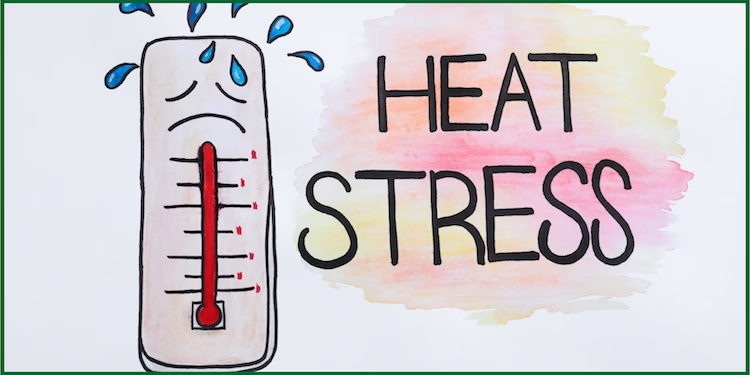As we enter the summer months, discussing keeping everyone safe from heat stress is essential. Understanding how our bodies react to high temperatures and identifying ways to stay safe is crucial for our health and that of our loved ones.
Table of Contents
- What is Heat Stress?
- Signs of Heat Stress
- Adult Heat Safety Tips
- Children’s Heat Safety Tips
What is Heat Stress?
Heat stress occurs when the body cannot cool itself properly. Our bodies develop a natural cooling mechanism through sweat, but extreme heat can overwhelm this system. Factors such as high humidity, intense physical activity, and dehydration increase the risk of heat-related illnesses.
Signs of Heat Stress
Heat-related illnesses can range from mild conditions like heat exhaustion to severe ones like heat stroke. Here’s what to look out for:
- Heat Exhaustion: Symptoms include heavy sweating, weakness, dizziness, headache, nausea, and cool, pale skin. If you or someone else is experiencing these heat symptoms, it is crucial to contact your healthcare provider.
- Heat Stroke: This is a medical emergency! Signs include a high body temperature (104°F or higher), hot and dry skin, rapid pulse, confusion, and even loss of consciousness. Call emergency services immediately if you suspect or notice someone experiencing heat stroke.
Heat Safety Tips for Adults
- Stay Hydrated: Drink plenty of water throughout the day, even if you don’t feel thirsty. Avoid caffeine and alcoholic drinks, as they can lead to dehydration.
- Dress Appropriately: Opt for lightweight, loose-fitting, and light-colored clothing. Loose-fitting and light-colored clothing allows sweat to evaporate and keep the body cooler.
- Limit Outdoor Activities: Avoid strenuous activities during peak heat times, typically between 10 a.m. and 4 p.m. If you must be outside, take frequent breaks in the shade or indoors.
- Use Cooling Devices: Fans, cool showers, or wet clothes can help lower your body temperature. Also, consider using an isothermal mattress to stay cool while sleeping.
- Know Your Body: Pay attention to how you feel and be aware of any underlying health conditions, such as heart disease or obesity, that might make you more susceptible to heat stress.
- Seek Shelter: Creating a cool environment is key to preventing heat stress regardless of age. Take advantage of local resources, such as community centers or shopping malls, especially during extreme heat alerts.
Heat Safety Tips for Children
Children are particularly vulnerable to heat stress due to their smaller size and higher body temperatures. Here’s how to protect them:
- Ensure Hydration: Encourage children to drink water regularly, especially during outdoor play. Make it fun by allowing them to choose their favorite reusable water bottle or mix it with flavored water.
- Dress Smart: Like adults, children should wear light clothing. Avoid dark-colored clothing and heavy fabrics that can trap heat.
- Schedule Activities Wisely: Plan outdoor activities early in the morning or later in the evening when temperatures are cooler.
- Take Breaks: Kids must take frequent breaks in the shade or indoors. Set a timer if they’re engaged in activities, reminding them to rest.
- Teach Awareness: As children grow, it’s vital to teach them about the importance of heat safety. Make it a game to recognize signs of heat stress and the importance of keeping cool.
- Seek Shelter: Take advantage of local resources, such as community centers or air-conditioned buildings, such as shopping malls, especially during extreme heat alerts.
Conclusion
Heat stress is a serious matter that requires vigilance, especially during the sweltering summer months. By being informed and proactive, we can ensure that adults, children, and other heat-vulnerable groups stay safe and enjoy the sun responsibly.
Let’s prioritize health this season by staying hydrated, wearing appropriate clothing, taking breaks, and looking out for one another.
Happy Summer!
Do you enjoy this reading? Kindly share with family, friends, and colleagues. Thanks! 🙂



